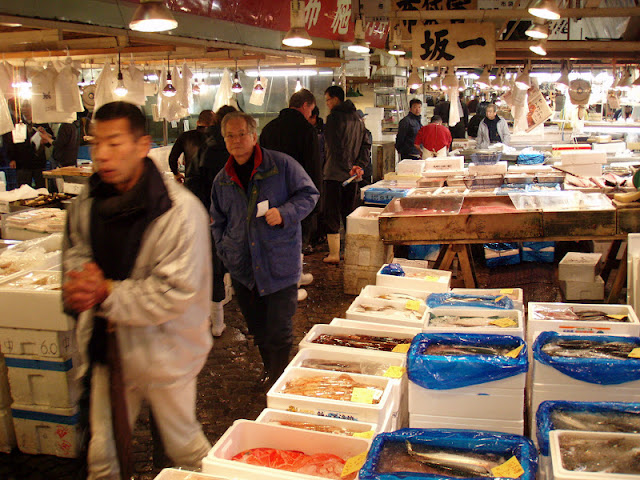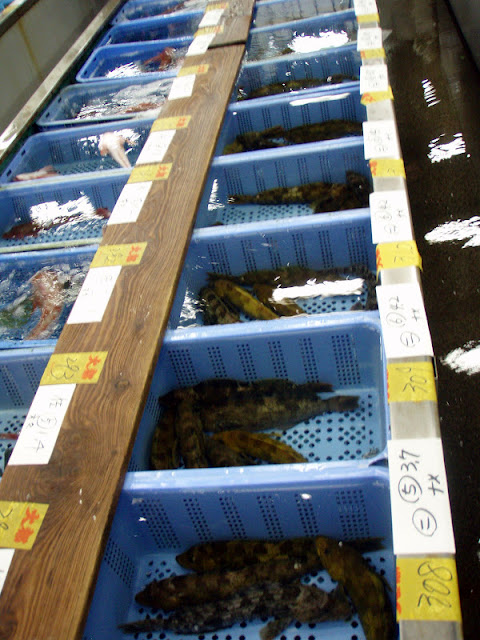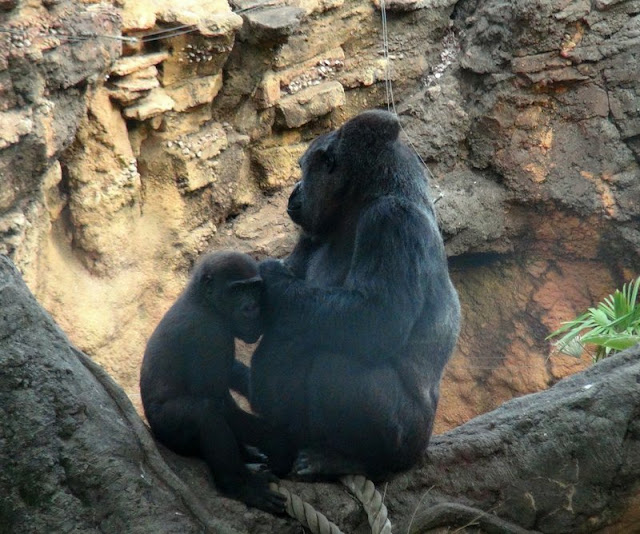After a challenging and enjoyable three years in Japan it is
time to say sayonara. While I’m sad to be leaving I am very happy to be going
home.
The Tsukiji fish markets are a great place to visit early in the morning as long as you remember that the markets are a working wholesale fish market. Most of the vendors have these amazing little electric powered carts that zip around and in the dark these silent machines come hurtling down alleys ways at amazing speeds.
The markets are broken up into two main areas, the tuna auctions and the wholesale fish markets. Access to the tuna actions is regulated and it can prove difficult to get in. They also start first thing in the morning and we visited around 5 am. The tuna come from all around the world and are auctioned at an amazing rate with buyers and sellers using a complex series of hand movements to communicate during the speedy auctions. Following the auction there is also the option of having the tuna cut up before you leave the markets.
The other part of the market is the general wholesale fish markets which are generally more open to the public and here you can see all variety of seafood for sale and open at a more reasonable time.
The area around the Tsukiji wholesale fish markets are also worth a visit as there a number of restaurants and kitchen suppliers.
Over the last three years I have sampled almost anything that could be purchased from a vending machine and in my last couple of weeks I've found the ultimate machine. Hot food, sensational including hotdogs, yakisoba (fried noodles), Yakitako (squid balls) and chips.
Escaping some wet weather over Tokyo I decided to head to Jogashima Island and see if there was any sun.
Jogashima Island is about 2 hours drive from Tokyo, about 1 square kilometre in size and located on the southern tip of the Kanagawa peninsula. The island is reach by crossing a toll bridge and is exposed to the ocean on the southern side. On this day there were a lot of people fishing and taking advantage of the great weather and the spectacular natural scenery of the island.
The main industry on the island is fishing and the fish markets with a fish market being recorded on the island from almost 2000 years ago.
Jogashima Island is about 2 hours drive from Tokyo, about 1 square kilometre in size and located on the southern tip of the Kanagawa peninsula. The island is reach by crossing a toll bridge and is exposed to the ocean on the southern side. On this day there were a lot of people fishing and taking advantage of the great weather and the spectacular natural scenery of the island.
After consulting one of the English language guides to Tokyo I came across a reference to an area called Sendagi. What always amazes me is how well small open spaces are utilised in Tokyo providing an escape from the relentlessness of this city. This small park was only a short walk from the subway entrance. To get there you had to pass a restaurant which appeared to be “seasoning” their woks under the grease exhaust fan (I didn’t go in for lunch).
As I was there a little early in the morning many of the shops had not started to open but the florist had just finished arranging his stock for display.

Up on the hill behind Sendagi there are a number of temples and, at the top of one otherwise ordinary street, another view of Mount Fuji. Winter time is definitely the best time to take in these views as the summer haze all but obscures views of Mount Fuji at other times of the year.
As I was there a little early in the morning many of the shops had not started to open but the florist had just finished arranging his stock for display.

Up on the hill behind Sendagi there are a number of temples and, at the top of one otherwise ordinary street, another view of Mount Fuji. Winter time is definitely the best time to take in these views as the summer haze all but obscures views of Mount Fuji at other times of the year.
As summer is here the Ueno zoo has started opening late so that people can see the animals in the "cool". Some of the animals had come out to enjoy the "cool" temperature of 33 C that apparently felt like 38 C. There was also some guy who dressed up like a Panda and there was a view of the Tokyo skytree across the lilypads. I also sampled some fine Yakitori.
After exiting the Denenchofu station (one of the more European stations I have visited in Tokyo complete with streets radiating from the entrance forecourt like spokes in a wheel, tree lined streets and water features) I headed towards the Tama River. Passing through one of the more opulent parts of Tokyo that I have seen, past a pretty little park, and a short ascent to the banks above the Tama River there is a park containing 6 ancient burial mounds. From the embankment high above the river there were also glimpses of a snow capped Mount Fuji behind the buildings.
Summer truly is the season for festivals in Japan. Just down
near Tamachi station over the weekend the local community closed one of the
major roads in the area and held the local festival. This festival was a little
different in that it had Brazilian dancers instead of Hawaiian dancers though
the obligatory mascot was there.
Back up to Yoyogi park and this weekend the Tokyo Brazilian
community held a festival not really similar to the Thai festival. There was mascots, again, and Australian or American beer???
A short 30 minute high speed boat ride from
Hiroshima is Miyajima Island. Known mainly for its giant “floating” tori the
island has held special religious significance since the mid-8thcentury. Deer
wonder freely around the island and help themselves to any spare food that may
not be secured. Itsukushima shrine built on stilts in front of the tori
(apparently the shrine was built on stilts over the water so that “commoners”
could visit theshrine without leaving foot prints on the island), and you can
climb Mt. Misen (530m) for views back over towards Hiroshima (hiking up the
last 1.5 kilometres of stairs when its 35 degrees Celsius and 80 precent
humidity can be testing) but the climb through the forest and the view makes it
all worthwhile.
.jpg)










.jpg)
















































